

Table of Contents
Page 1: Megami Tensei I & II
Page 2: Shin Megami Tensei I & II
Page 3: Shin Megami Tensei If... & III
Page 4: Devil Summoner / Soul Hackers
Page 5: Persona
Page 6: Persona 2: Innocent Sin & Eternal Punishment
Page 7: Persona 3, FES, and 4
Page 8: Digital Devil Saga
Page 9: Devil Summoner: Raidou Kuzunoha
Page 10: Devil Survivor / Strange Journey
Page 11: Other Megami Tensei games
Page 12: Majin Tensei
Page 13: Last Bible
Page 14: Devil Children / Demikids
Page 15: Anime
Devil Children: Red Blook / Black Book / White Book Gameboy Color / PSOne - 2000
Soundtrack Cover
Devil Children: Black Book
Devil Children: Black Book
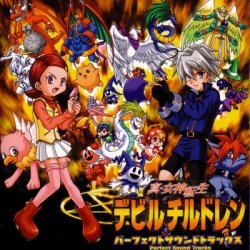
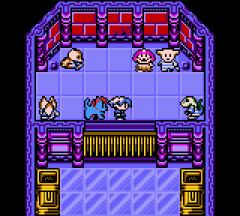
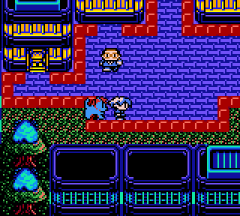
"Red Book" and "Black Book" are the first games in the series, released for the Gameboy Color. Unlike the Pokemon games, where each version only differs in the monsters you find, "Red Book" and "Black Book" are two completely separate games, featuring two distinct protagonists, although the plots do intertwine. A third one, "White Book" was later released as a sequel, and once again takes place in the same world, with an entirely new main character.
All of the main characters are "Devil Children" - that is half breeds who are part demon, part human. All of their adventures take them from their lives in modern Japan to the realm of the Makai. Early in the game, they get some weaponry (seeing little kids wield cutesy guns is oddly disturbing) and a companion monster to guide them. These creatures speak human language and yammer quite a bit, making Devil Children feel closer to Digimon than Pokemon (don't ask me how I know the difference.)
The heroine of the Red Book. Her father is missing somewhere in the Makai. Her companion is a pink little bird named Veil.
The hero of the Black Book. His little brother is kidnapped and taken to the demon world by an army of tiny Jack Frosts. His partner is a mini Cerebus named Cool.
The hero of the White Book. His life is intertwined with a quiet boy named Takaharu. Looks similar to a chibi version of the hero from the original Shin Megami Tensei games. His pet is a green tiger thing named Cray.
Since the game is aimed at kids, Devil Children is a bit more simplistic than the average Megaten title. Your human character never fights at all - rather, he/she sits back and lets their monsters duel, two at a time. Whenever one of your combatants is killed, another is brought into the fray immediately. Only the human character gains experience, so the only real way to make your monsters stronger is by fusing them together. As usual, you recruit new monsters by conversing, although monsters tend to respond mostly by chance. Despite its relative simplicity in the grand scheme of the series, it's still more in depth than Pokemon, and it still poses a bit of a challenge.
Devil Children has thrived almost entirely on portables, carrying on the torch after the rather cut-and-dry Last Bible series. However, "Red Book" and "Black Book" were bundled together and ported to the PSOne in 2002 ("White Book" is nowhere to be seen.) The terrible Gameboy Color graphics were "upgraded", in the sense that they now look like a subpar Super Famicom RPG, and the music hasn't improved much either. The expanded space does allow for a short anime intro, and bunch of spoken dialogue.
Video
Devil Children: Red Book
Devil Children: Red Book
Devil Children: Red Book
Devil Children: Red Book
Devil Children: White Book
When Shin Megami Tensei Nocturne came out in America, both gamers and journalists were quick to label it as "Pokemon in hell". While this isn't a totally inaccurate conclusion, longtime fans were quick to point out that Megaten did the whole monster collection thing long before Nintendo got their greedy hands on the idea. Atlus, seeing the potential of the untapped children's market, decided to return the favor. Thus was born Devil Children, a junior version of Shin Megami Tensei, starring kids and cutesy little monsters as their companions.
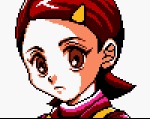

Mirai
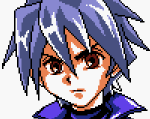
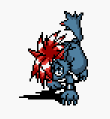
Setsuna

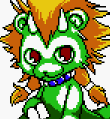
Masaki
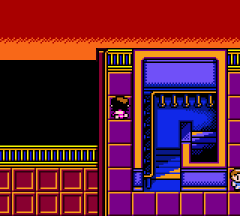
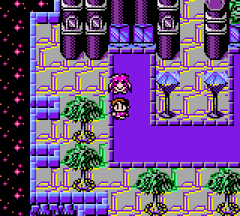
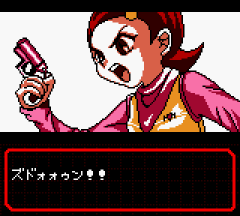
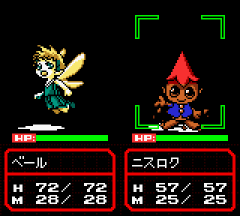
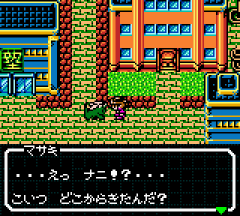
Screenshot Comparisons
Gameboy Color
Playstation
Gameboy Color
Playstation

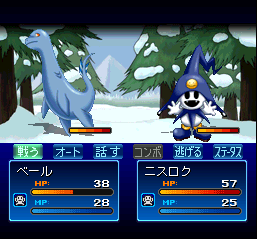
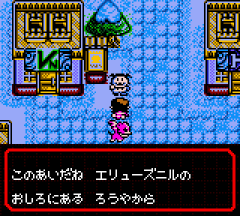

Devil Children: Card Summoner - Gameboy Color (2001)
Card Summoner
Card Summoner
Card Summoner



Card Summoner
Every mass market multimedia tie-in needs a card game, right? It was no different with
Devil Children, unfortunately, and the card game was later translated back into a video game. While it has some overhead sequences where you walk around and talk to opponents (like Card Fighters Clash for the Neo Geo Pocket Color), most of the game is done through card battling. Near as I can tell, it plays similar to Magic: The Gathering and other similar games, where each card summon a demon to attack and protect the players HP. Beyond that, I couldn't tell you what it was about. Card Summoner features an even wackier set of
character designs than the rest of the series.

Devil Children/Demikids: Book of Light/Book of Darkness Gameboy Advance - 2003
American Dark Cover
American Light Cover
Demikids: Dark Version
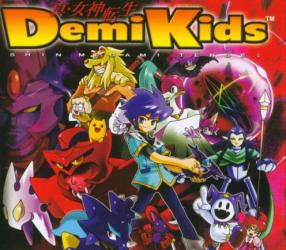
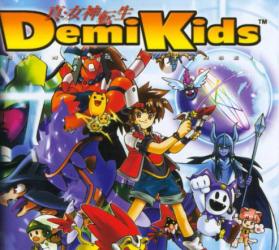
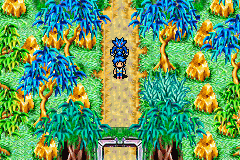
The hero of the Light Version, Jin is initially sucked into Valhalla, where he fights alongside the rebels against the evil Imperium forces. His pet is a little "Sun Wolf" named Rand.
The hero of the Dark Version, Akira is summoned by Lucifer himself into
the land of Dem, where he's put in charge of nullfying those nasty portals. His pet is a dragon named Gale.
The new girl in school, Amy seems to know a lot about demon summoning. She actually hails from the world of Valhalla, where humans live under the rule of demons.
The only major upgrade from the Gameboy Color games is the ability to have more party members and enemies in battle at the same time. The games were mostly shunned when it came out, and while it's not in the same realm as Golden Sun, both games are relatively decent for being fairly conventional RPGs.
Demikids: Dark Version
Demikids: Light Version
Demikids: Light Version
Demikids: Light Version
Devil Children: Puzzle de Call - Gameboy Advance (2002)
The Gameboy Advance sequel to Devil Children, released as Demikids in North America, maintains most of the same gameplay conventions of its predecessors, while spicing it up with much better graphics. The game begins with the kids stumble upon a book in the school library which can summon demons. Naturally, this gets them into trouble, but things worsen when time rifts start opening up around town. Apparently, these little portals are causing the fabric of space and time to collapse. After being notified that our heroes are half-demon, half-human, and posses the usual super powers, they split paths into different worlds to help stop the universe from being destroyed. Much like its predecessors, there are two version: Light and Dark. This might seem like a player is choosing between the "good" and "bad" side, but that's not quite the case. However, the Dark version is a bit harder.
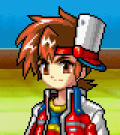
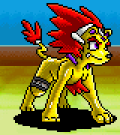
Jin
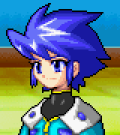
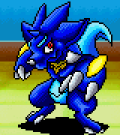
Akira
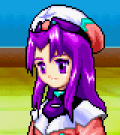
Amy
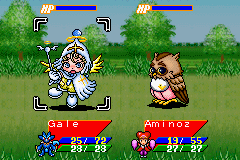



Japanese Cover
Puzzle de Call
Puzzle de Call
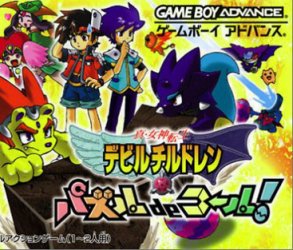

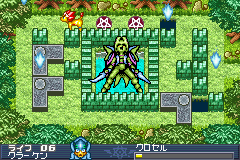
Puzzle de Call
Remember Sokoban? That box-pushing puzzle game? Well, add characters from the GBA version of Devil Children and you've got Puzzle de Call. The Story mode begins when Jin and Akira are sucked into some bizarre alternate world, so Rand and Gale jump in to find them. Each level is made of several screens, each of which contains an egg. Hatching it will summon another demon that can be switched in and out of gameplay. However, the eggs disappear after a set number of turns, so getting to it is your highest priority. Beyond that, you just need to get to the pentagram that leads you to the next screen. At the end of each stage is a boss fight, where you need to collect all of the icons on the screen, all while dodging enemy attacks. It's an interesting idea, and one that noticeably spices up an otherwise standard game. Still, unless you really like box puzzles, there's nothing too drastically appealing about Puzzle de Call.

Devil Children: Messiah Riser - Gameboy Advance (2004)
Japanese Cover
Messiah Riser
Messiah Riser
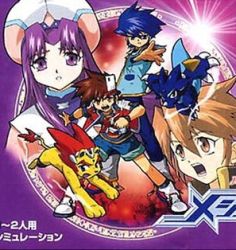


Messiah Riser
Messiah Riser (sometimes romanized as "Messiahlyzer") is something of a depature from the traditional RPG mold. It's actually a real-time strategy game, where you summon demons onto the field, tell them where to move or attack, and watch the action unfold. It's an interesting idea, especially since it eschews the usual turn-based, grid-based system we usually see in Japanese RPGs. Still, the interface is very clunky, and the artificial intelligence is a bit haphazard, so actually playing the game can be an exercise in chaos. It also feels a bit limited, especially since each monster only has one magic attack. There aren't exploration bits either, just level-by-level combat.
